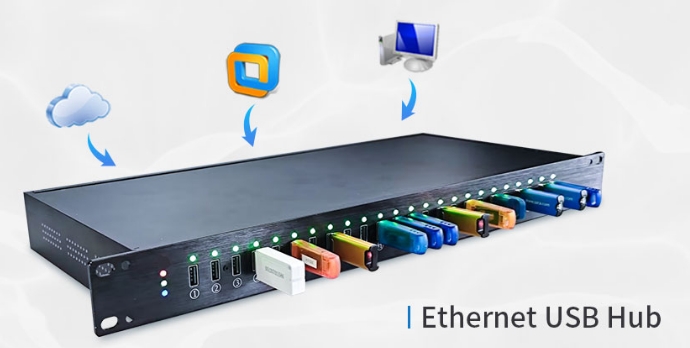Have you ever wished your Steam Controller dongle could follow you into the cloud? You fire up your favorite game on a virtual machine, but your controller just sits there, disconnected and silent. The truth is simple — your dongle still lives in the physical world. Your cloud setup doesn’t know it exists.
That’s where ChilliSky USB Server steps in — your personal bridge between the real and the virtual. Think of it as an Ethernet USB device server that gives your USB ports a new passport. It lets your connected USB devices travel across networks, turning your Steam Controller dongle into a fully remote USB device.

Why Virtualize a Steam Controller Dongle at All?
Let’s start with the “why.” Cloud gaming promises freedom — but freedom fades fast when your USB dongles refuse to connect.
Your controller depends on that tiny Steam Controller dongle for low-latency input. But when your games run on virtual machines or in the cloud, your local USB port might as well be a locked door. You need a key — and that key is USB over IP.
When you virtualize your Steam Controller dongle through a USB device server like ChilliSky, it’s like building a secure tunnel from your desk straight into your cloud gaming world. The dongle’s data flows across gigabit Ethernet instead of being trapped by a short cable. Suddenly, the cloud feels local again.
How ChilliSky USB Server Makes It Simple
Picture this: a smart USB hub that lives on your network. You plug in your Steam Controller dongle, and ChilliSky USB Server turns it into a shareable resource. Every remote client—from your gaming laptop to your VM—can now see it through standard TCP/IP communication.
It works with USB 2.0 and USB 3.0 devices, handles multiple USB ports, and keeps data transfer speeds stable. That means you can share USB devices across systems without sacrificing performance.
And setup? Easier than you think.
1. Plug your Steam Controller dongle into the ChilliSky hardware.
2. Connect the server to your gigabit Ethernet network.
3. Open the device manager on your remote system — the dongle appears instantly.
4. Pair your controller, and start playing.
That’s it. No complicated passthroughs, no fiddling with virtualization settings. Just plug, share, and play.

What Makes This Better Than Traditional USB Sharing
You might ask, “Can’t I just use a USB hub and plug it in?” Sure, if your gaming rig is right beside you. But in cloud gaming, your virtual machine could be miles away.
That’s why ChilliSky USB Server matters. It’s not just a hub — it’s a USB over IP bridge that treats your Steam Controller dongle like a citizen of the network. It lets you manage USB devices remotely, control access, and even power them safely through a reliable power supply.
Traditional hubs don’t speak TCP/IP. But ChilliSky does. It understands networks. It speaks Ethernet. It keeps your USB devices over a network steady, fast, and secure.
Why Gamers and IT Pros Both Love It
If you’re a gamer, virtualizing your Steam Controller dongle with ChilliSky USB Server means you can finally play from anywhere — no more plugging, unplugging, or moving hardware.
If you’re an IT admin, it’s a dream come true. You can share USB devices among multiple remote clients, organize them through your device manager, and scale up with additional USB device servers as your infrastructure grows.
Every dongle, sensor, or key becomes accessible without ever leaving the rack. And because it’s built on gigabit Ethernet, you get the speed and stability you need for serious data transfer tasks — gaming included.
The Future of Steam Controller Dongle Virtualization
Here’s the big picture: hardware and software are merging. The walls between your physical setup and the cloud are disappearing. Your Steam Controller dongle doesn’t have to be chained to one PC anymore. It can live on a network, managed through ChilliSky USB Server, serving any remote client that needs it.
That’s the beauty of USB over IP — it transforms how we think about gaming, development, and even enterprise device management. Today it’s your controller; tomorrow it might be a VR tracker or a test instrument, all handled through the same Ethernet USB device server setup.
Final Thoughts: Building a Smarter USB Ecosystem
So, here’s the question: if we can move our games to the cloud, why not our Steam Controller dongle too?
With ChilliSky USB Server, that little piece of plastic becomes a network traveler — always connected, always ready. It’s not just about playing games remotely. It’s about creating a smarter, more flexible way to share and manage USB devices in a connected world.
Whether you’re streaming, developing, or just exploring new ways to play, remember this: the future isn’t tethered by cables. It’s powered by connection — by USB over IP, by Ethernet, and by innovation.
And it all starts with one simple move: virtualize your Steam Controller dongle today.
